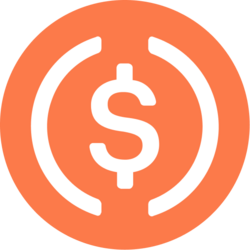You can subscribe to Withings+ with one month free, and then it’s $100 per year or $10 per month. If you’re worried enough about hypertension that you want to monitor your blood pressure at home, I think you probably already know what you need to do to improve your health, and the Withings+ Health Improvement Score won’t help you.
You Need to Calm Down
I asked Jehan Bahrainwala, a Stanford professor with a clinical area of focus in resistant hypertension and secondary hypertension, how you’re supposed to use this thing. “It is more useful to have more readings over a short time period than sporadic readings over a longer time period,” she responded over email. “I recommend patients monitor their blood pressure at the same time daily for one week in a row, one week per month, and keep a journal of these readings.”
The display is simple—it shows your systolic and diastolic blood pressure and heart rate. You can take one measurement at a time or three in a row, which takes about 5 minutes with 45 seconds of rest in between. I recommend taking three in a row because even if you follow every other instruction that Withings gives you, my first reading always showed elevated blood pressure.
It turns out that taking your own blood pressure reading isn’t as easy as lying on an exam table. To use the BPM Vision, I sat down at my kitchen table at the same time every morning. I had my back supported, with my feet uncrossed and flat on the floor. I took my sweatshirt off and drank plenty of water. I rested my arm on the table for around 5 minutes, then I wrapped the cuff around my upper arm with the tube running down the middle, along my vein.
I have a family history of stroke, so I have a particular interest in monitoring my blood pressure. It’s worth noting here that I am scrupulously healthy, as befits someone covered in fitness trackers at all times. I watch what I eat; I exercise regularly; I avoid alcohol. However, I can make my blood pressure shoot up by thinking about the wrong person at the wrong time. (If you’re reading this, it’s not you!)
However, my husband has no history of high blood pressure or high cholesterol, and he doesn’t have to follow any rules whatsoever. He can take a reading immediately after an hour-long hike with the dog, and his blood pressure will be low. With blood pressure readings, as with so many other things, your mileage will vary. Neither of us found it uncomfortable when the cuff was inflated.
Given that one of the main selling points of a Withings+ subscription is Cardio Check-Up, it’s a major ding that this feature does not work with the BPM Vision. (Cardio Check-Up only works with Withings products that have the ECG feature, like the Scanwatch 2.) You can download a comprehensive monthly health report on the Withings app to bring to your health care provider, and it includes your blood pressure readings, but it’s not the same level of concierge service as having a cardiologist check on you within 24 hours.
The BPM Vision is also bigger than the BPM Connect, a factor to contend with if you plan on traveling with it (and if you have to take your blood pressure every day, you probably will). But do you need a blood pressure monitor? Unfortunately, you should probably have one, even if you don’t have a family history of stroke. “High blood pressure is very often asymptomatic,” says Bahrainwala. “Home blood pressure monitoring could help diagnose this earlier, which can then lead to timely interventions.”
The Withings BPM Vision is handy and comfortable, and you don’t have to wear a giant, clunky thing on your arm. Even if you can’t send the data to a cardiologist to check ASAP, it’s particularly useful that you can easily keep a long-term journal in the app to give to a provider. I—and you, too, probably—should make sure to get a little more time to exercise from now on.












































